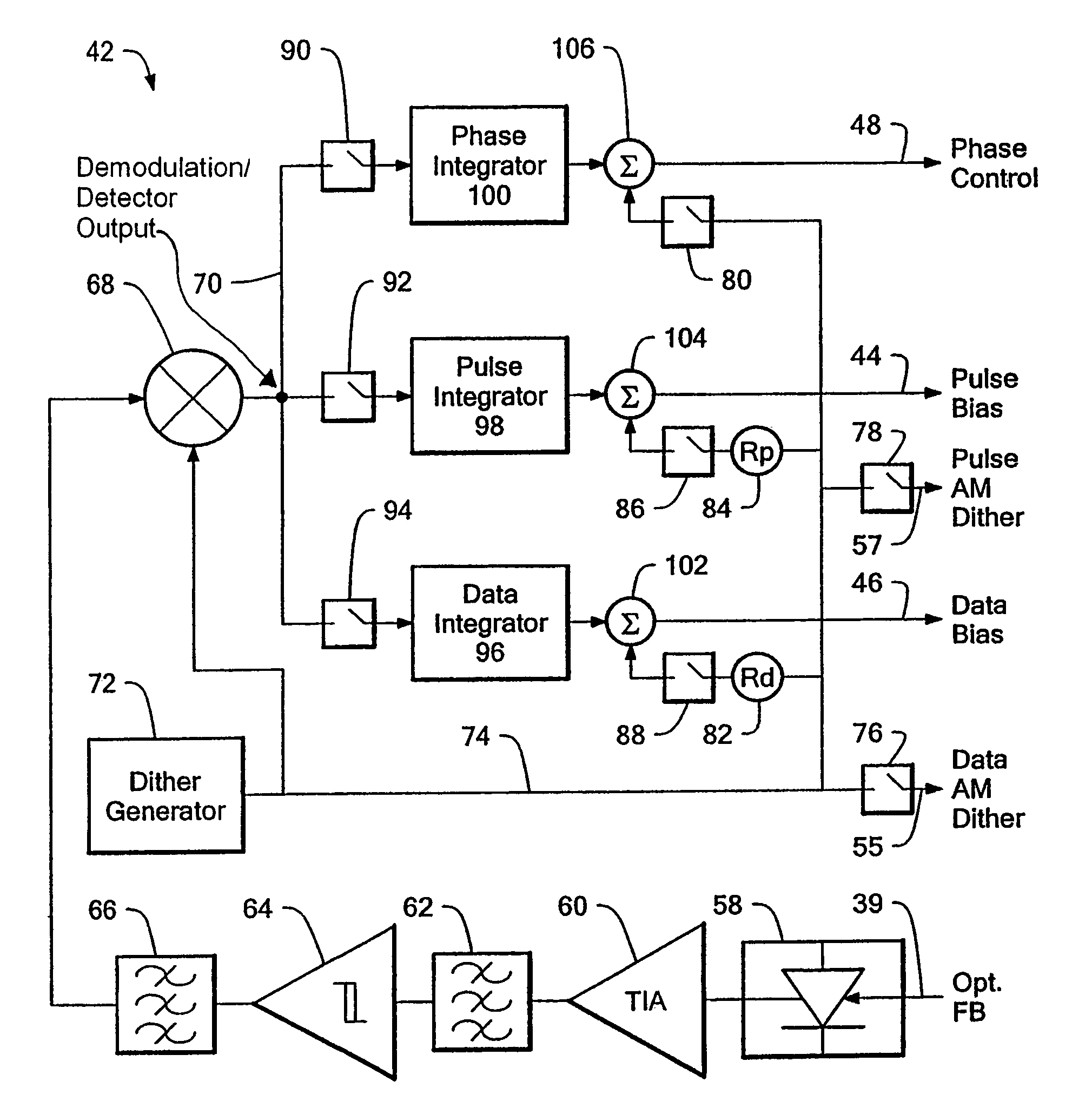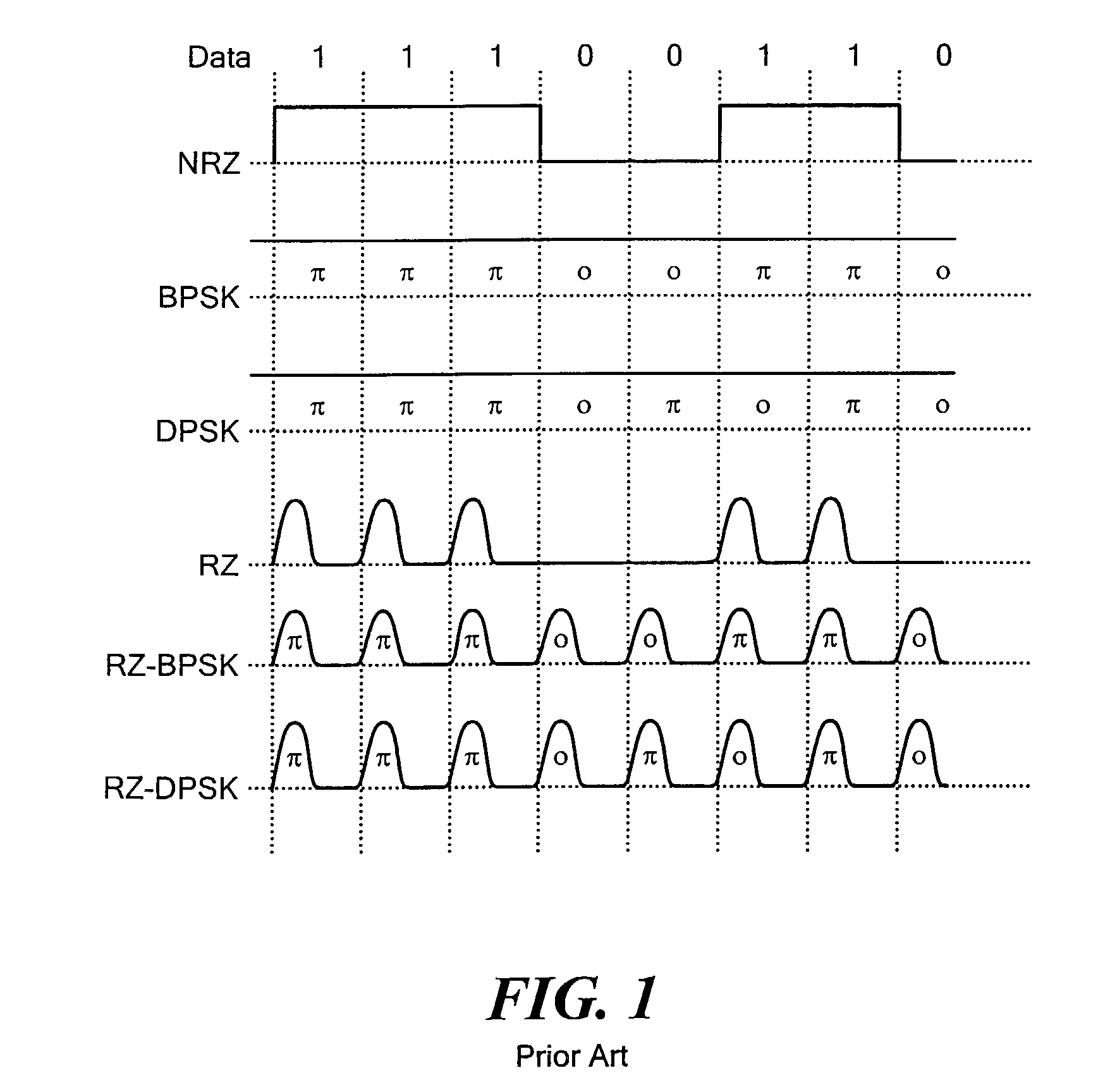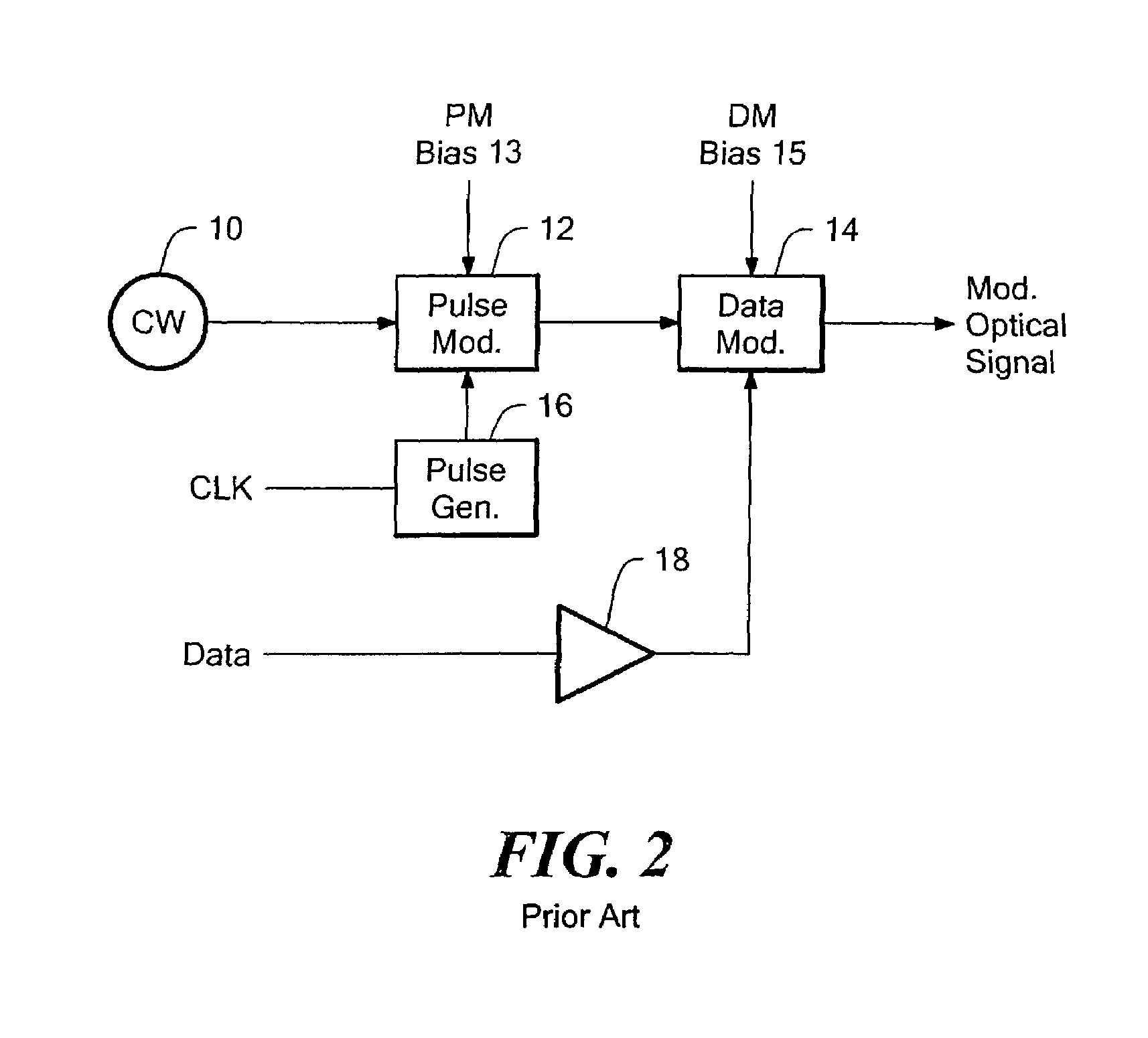Control of an optical modulator for desired biasing of data and pulse modulators
a pulse modulator and control technology, applied in the field of data encoding and transmission, can solve the problem of difficult recovery of transmitted data from received optical signals, and achieve the effect of sacrificing performance, less expensive, and less expensiv
- Summary
- Abstract
- Description
- Claims
- Application Information
AI Technical Summary
Benefits of technology
Problems solved by technology
Method used
Image
Examples
Embodiment Construction
[0024]The disclosure of U.S. Provisional Patent Application No. 60 / 364,822 filed Mar. 15, 2002 is hereby incorporated by reference.
[0025]FIG. 1 illustrates several known optical modulation formats. In non-return-to-zero (NRZ) modulation, each binary digit (1 or 0) is conveyed as a corresponding optical amplitude level (on or off) for the entire bit period. Binary phase-shift key (BPSK) modulation produces a constant-envelope signal in which the binary data modulates the optical phase as 0 or 180 degrees. Differential Phase Shift Key (DPSK) modulation is a variant of BPSK in which the binary data is differentially encoded before optical phase modulation. In return-to-zero (RZ) modulation, one binary digit is represented as a pulse occurring within a bit period, and the other binary digit is represented as no pulse. RZ-BPSK and RZ-DPSK modulation is are forms of BPSK and DPSK respectively in which a return-to-zero amplitude transition is imposed every bit period concurrently with the ...
PUM
 Login to View More
Login to View More Abstract
Description
Claims
Application Information
 Login to View More
Login to View More - R&D
- Intellectual Property
- Life Sciences
- Materials
- Tech Scout
- Unparalleled Data Quality
- Higher Quality Content
- 60% Fewer Hallucinations
Browse by: Latest US Patents, China's latest patents, Technical Efficacy Thesaurus, Application Domain, Technology Topic, Popular Technical Reports.
© 2025 PatSnap. All rights reserved.Legal|Privacy policy|Modern Slavery Act Transparency Statement|Sitemap|About US| Contact US: help@patsnap.com



